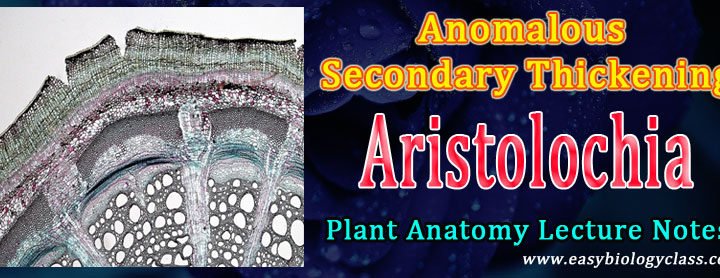Mirabilis jalapa (4 O’clock plant) and Nyctanthes belongs to the family Nyctaginaceae. In the previous post we discussed the anomalous secondary thickening in Amaranthus / Achyranthes (Amaranthaceae). Similar to Amaranthus, the secondary thickening in Mirabilis and Nyctanthes also occurs due to the formation of accessory cambia formed external to the […]
Continue ReadingTag Archives: Plant Anatomy Short Notes
Anomalous Secondary Thickening in Amaranthus and Achyranthes Stem
Anomalous secondary thickening in Amaranthus and Achyranthes occurs due to the abnormal activity of an abnormal cambium. Here, new cambial rings are formed from the cortex or pericycle after the older cambium has ceased its functioning. The new cambial strip formed also behaves abnormally. This type of anomalous secondary thickening […]
Continue ReadingAnomalous Secondary Thickening in Aristolochia Stem
Aristolochia (Family: Aristolochiaceae) is a climber and the pattern of secondary thickening in the stem of Aristolochia helps its twining habitat. In Aristolochia, the cambium is normal but showing abnormal activity. During the secondary growth, the normal cambial ring is formed by the fusion of fascicular and inter-fascicular cambium. However, […]
Continue ReadingShoot Apical Meristem- Structure and Organization
Apical meristem Ø Apical meristem is a patch of meristematic tissue present in the apex (tips) of shoot and roots in plants. Shoot apex Ø Shoot apex is the growing tip of the stem. Ø It is an undifferentiated region with meristematic cells. Ø From this region the plant […]
Continue ReadingNodal Anatomy of Angiosperms: Unilacunar, Trilacunar and Multilacunar Node
Nodal anatomy refers to the study of the structure and function of nodes of plants, which are the points on a stem where leaves, branches, and buds arise. This includes the examination of the internal and external features of nodes, such as the vascular tissue, meristems, leaf gaps and leaf […]
Continue Reading



